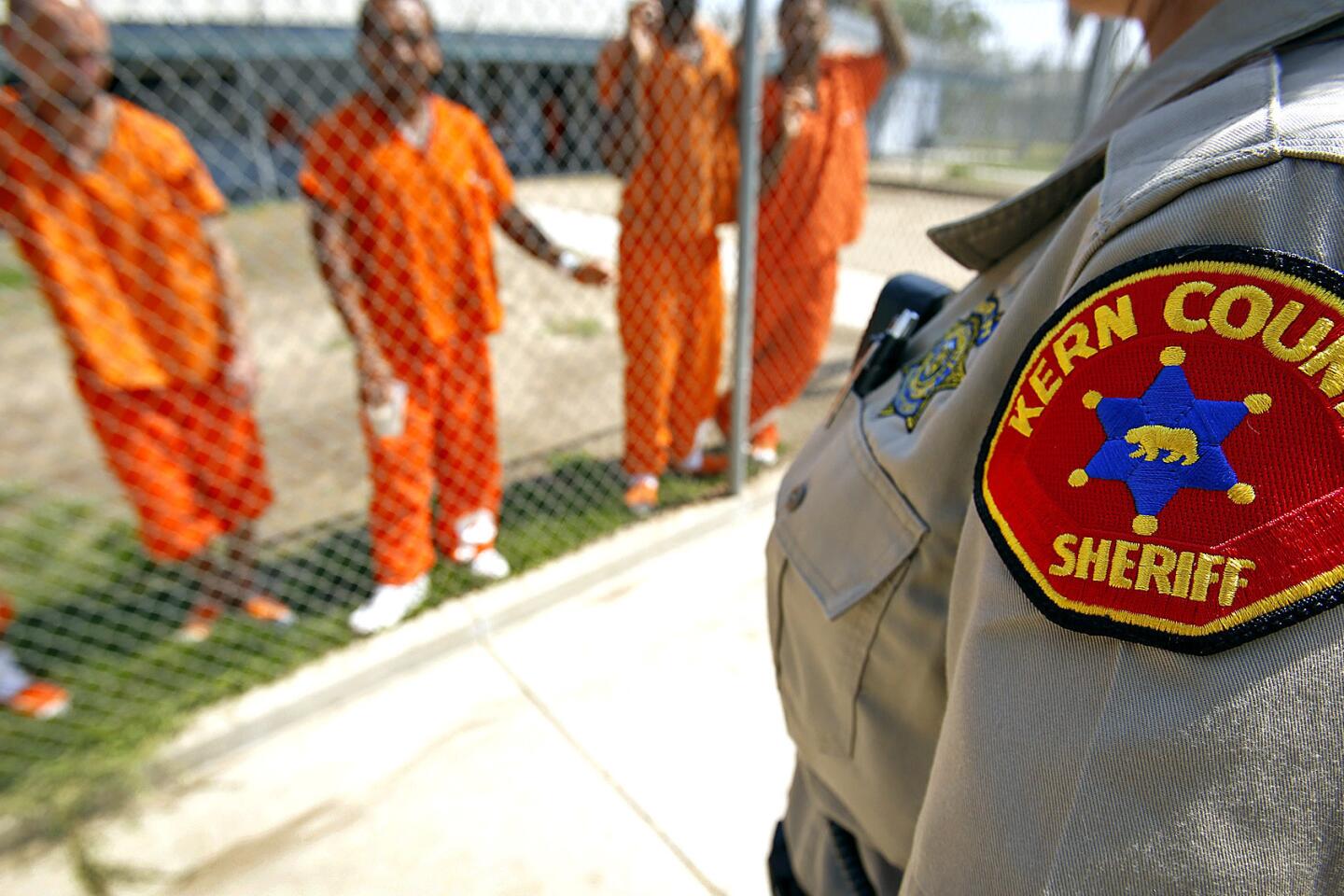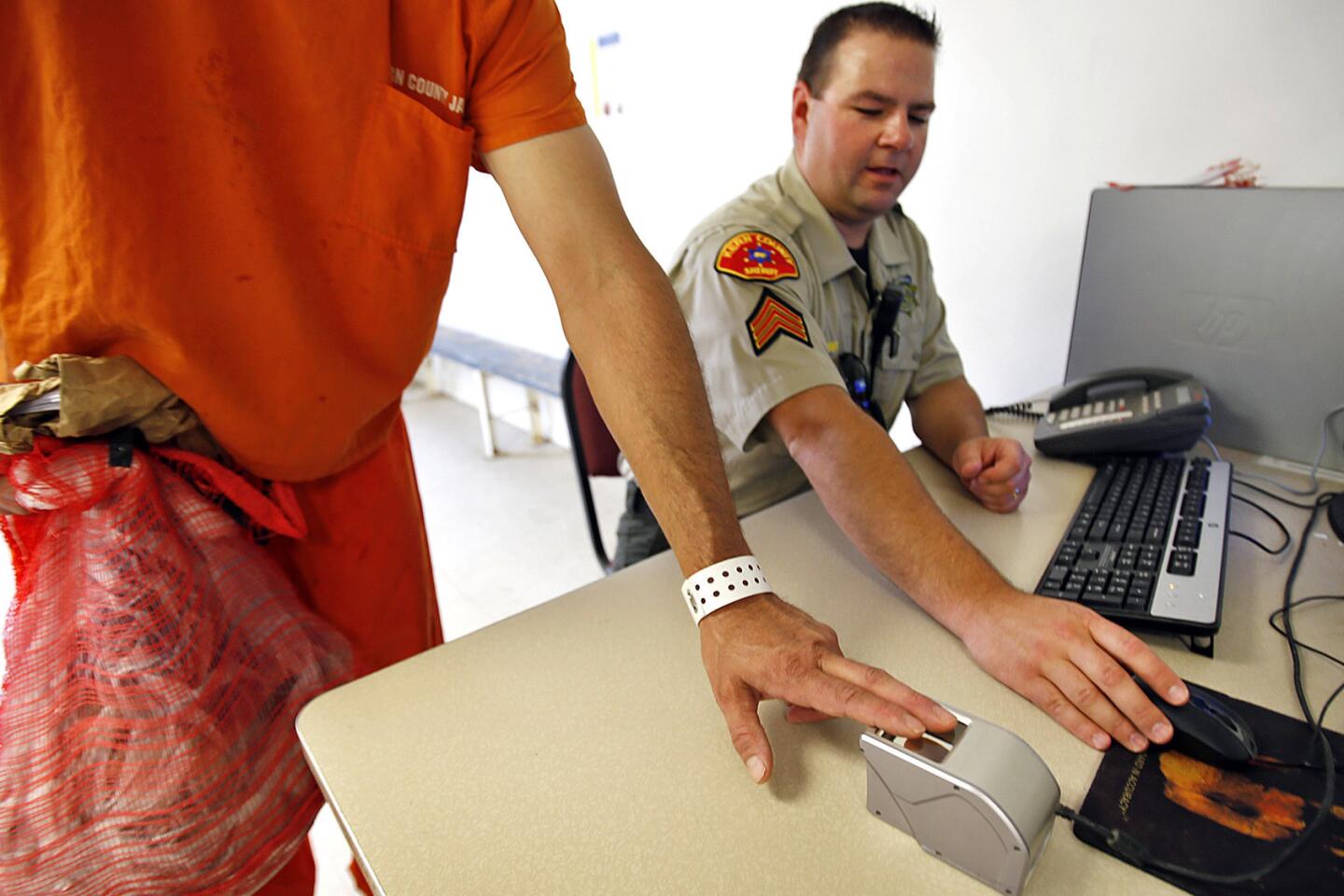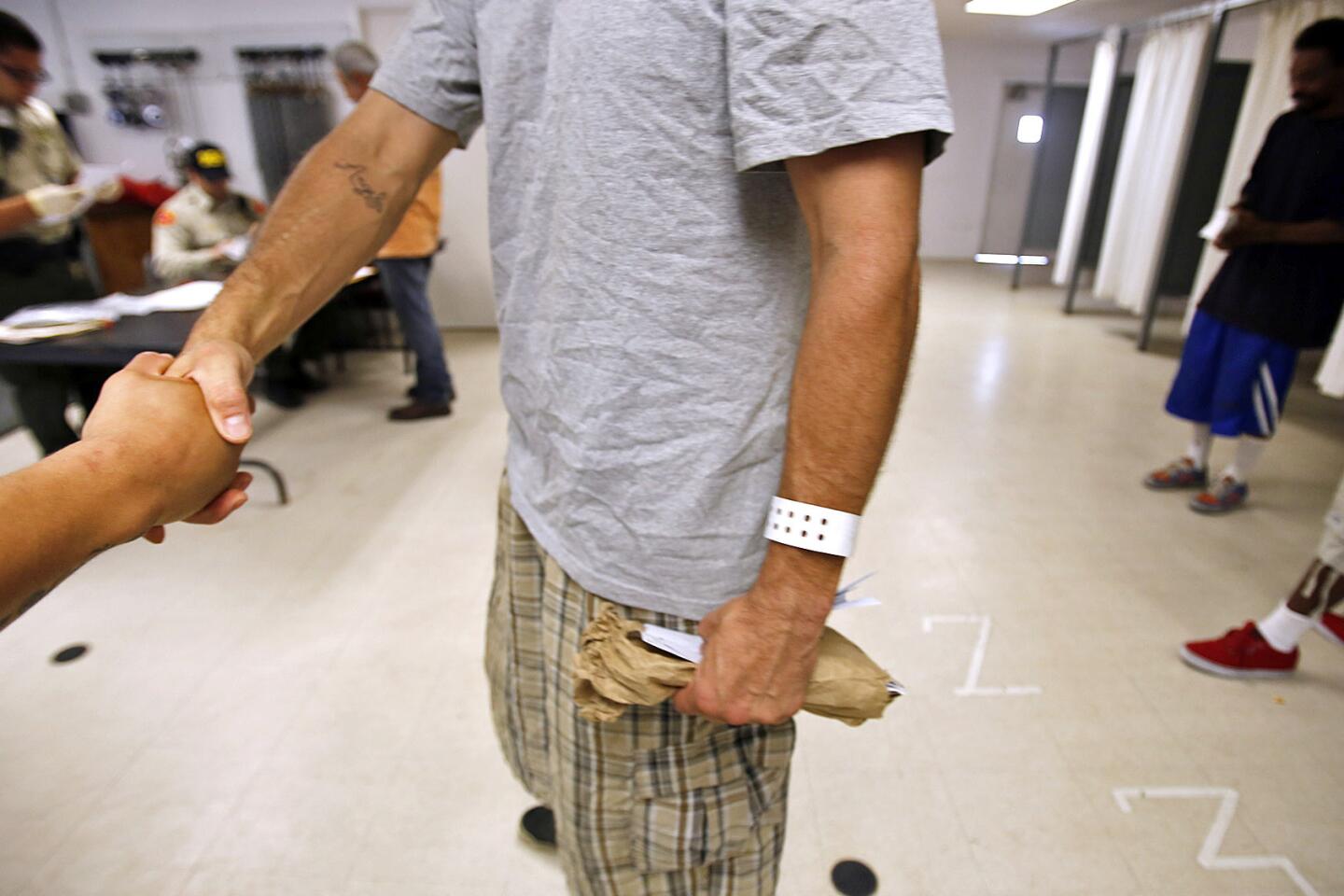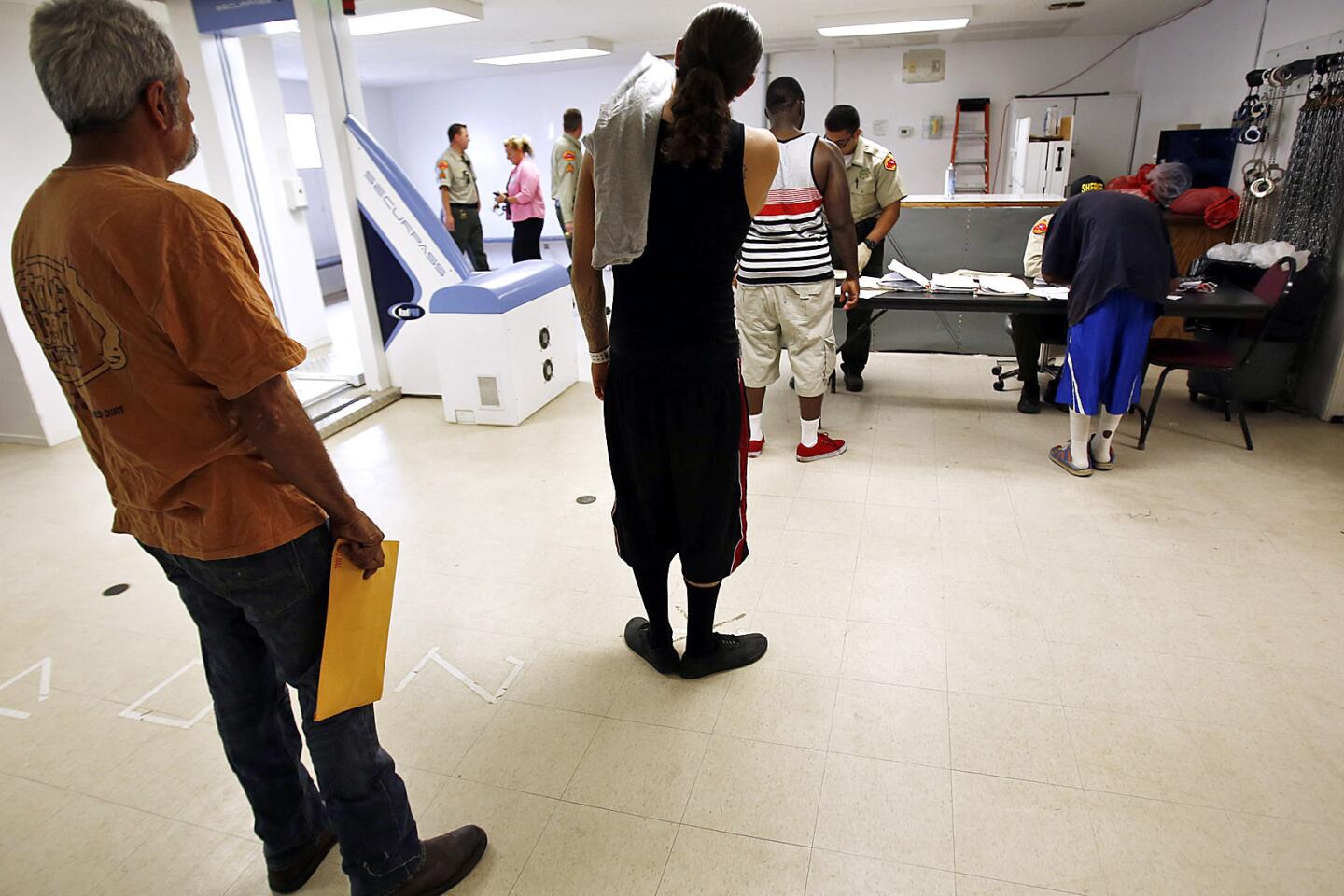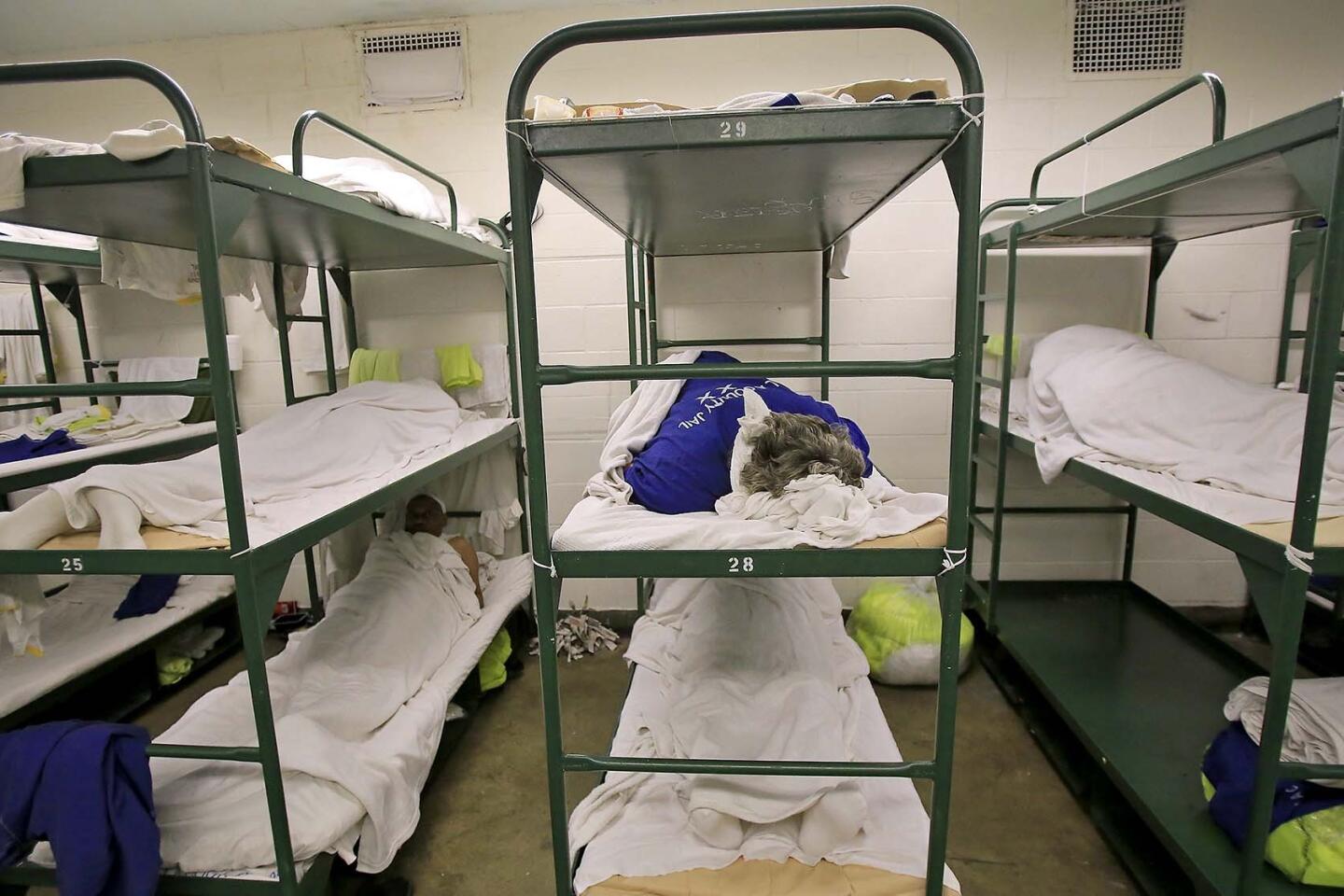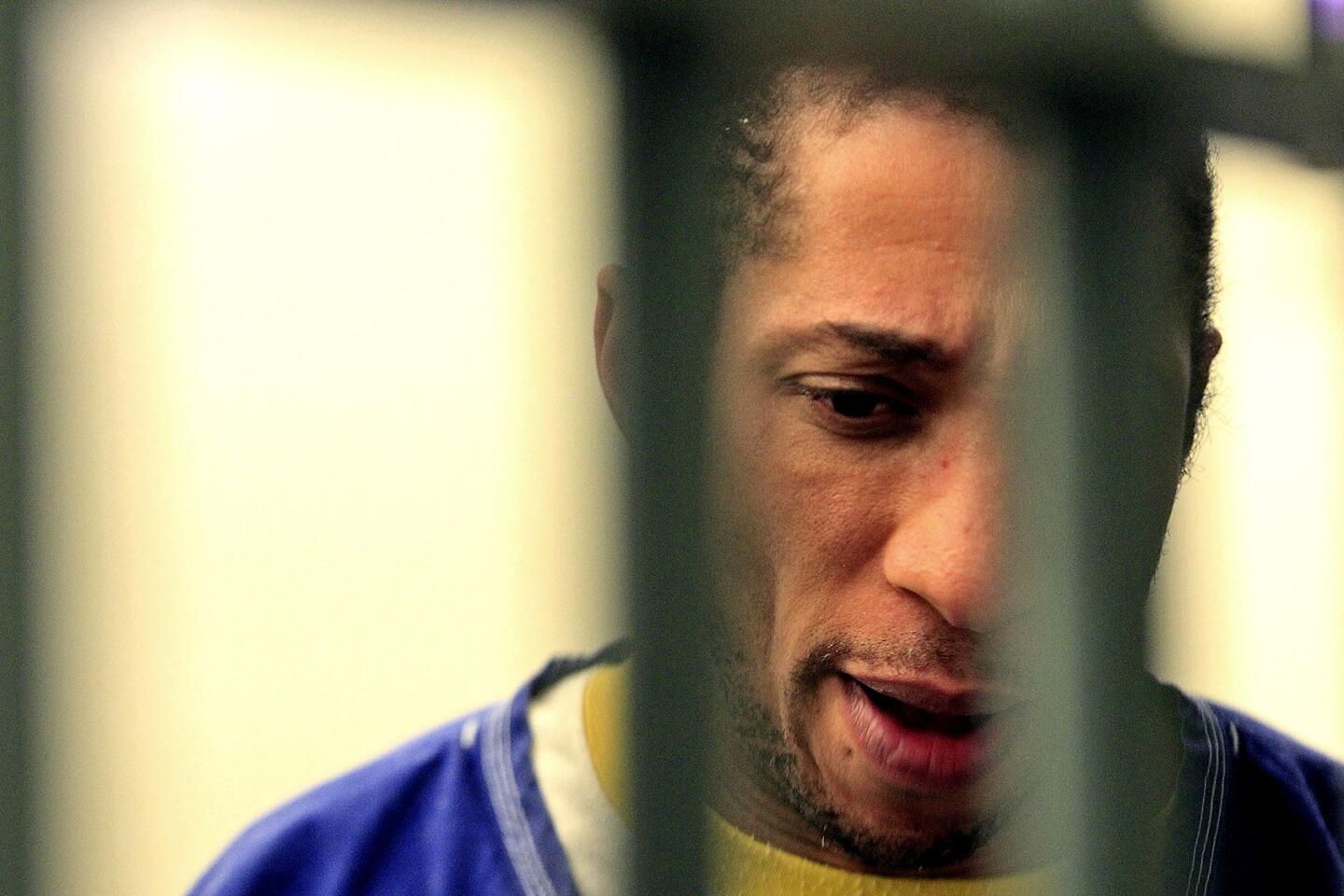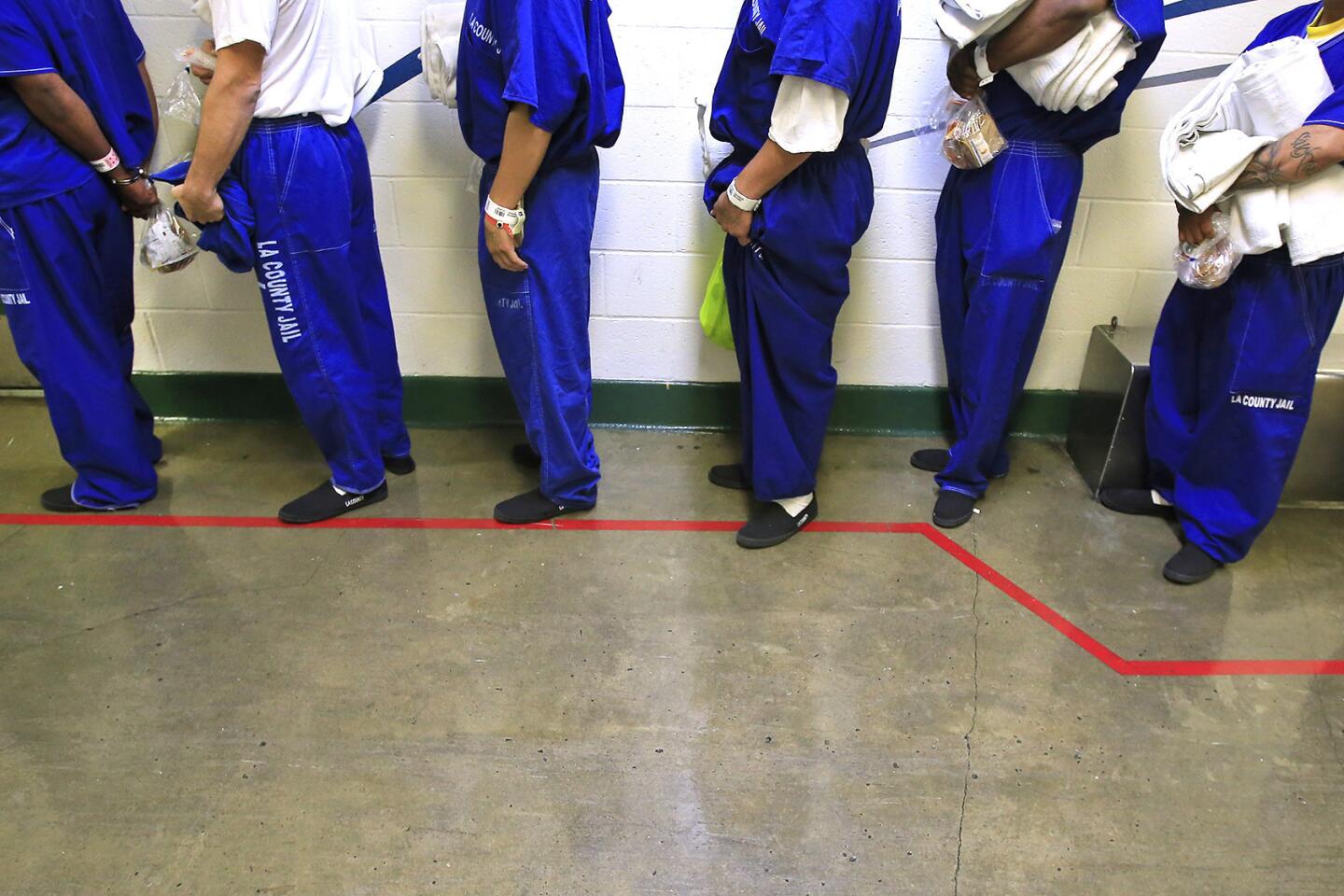Early jail releases have surged since California’s prison realignment
Jesus Ysasaga had been arrested multiple times and ordered by the court to keep away from his ex-girlfriend. Two parole boards sentenced him to nearly a year in jail for stalking, drunkenness and battery.
But the Fresno County jail would not keep him.
Four times in the summer of 2012, authorities let Ysasaga go, refusing two times to even book him. The jail had no room.
Ysasaga’s attorney, Jerry Lowe, said the parade of convicted offenders being turned away from the jail was common. “It became quite a joke,” he said.
------------
FOR THE RECORD:
Jail realignment: In the Aug. 17 Section A, an article and chart about early releases of offenders from local jails said that, according to state jail commission figures, 17,400 county jail inmates were released early in October 2013 due to crowding. After publication, the commission said it had made an error and that the October total was 13,509.
------------
Across California, more than 13,500 inmates are being released early each month to relieve crowding in local jails — a 34% increase over the last three years. A Times investigation shows a significant shift in who is being let out of jail, how early and where.
The releases spring from an effort begun in 2011 to divert low-level offenders from crowded state prisons to local jails. The move had a cascade effect, forcing local authorities to release their least dangerous inmates to make room for more serious offenders.
“It changes criminal justice in California,” said Monterey County Chief Deputy Edward Laverone, who oversees the jail. “The ‘lock them up and throw away the key’ is gone.”
State and local officials say that they are making every effort to ensure the releases pose little danger to the public, freeing those believed to be the least risky convicts, usually parole violators and those convicted of misdemeanors.
But an analysis of jail data has found that incarceration in some counties has been curtailed or virtually eliminated for a variety of misdemeanors, including parole violations, domestic violence, child abuse, drug use and driving under the influence.
In Los Angeles County, with a quarter of California’s jail population, male inmates often are released after serving as little as 10% of their sentences and female prisoners after 5%.
Fresno County logs show the jail is releasing criminals convicted of crimes that used to rate prison time: fraud, forgery and trafficking in stolen goods.
Law enforcement officials say that criminals have been emboldened by the erratic punishment.
“Every day we get guys who show up in the lobby, stoned out of their minds,” said one parole agent who did not want to be identified because he was not authorized to speak about the issue. “I’ll have 15 arrested, and 12 to 14 will be released immediately.”
“We are, for lack of a better term, completely impotent,” he said.
For law enforcement agents, the jailhouse revolving door is frustrating.
Leopoldo Arellano, 39, was in and out of custody at least 18 times from 2012 to 2014 for violating parole, criminal threats and at least four incidents of domestic battery, according to Los Angeles County jail logs.
San Diego County let parolee Demetrius Roberts go early 12 times; mostly for removing or tampering with his GPS tracker, which he was required to wear as a convicted sex offender.
In Stockton last year, a furor erupted over the repeated releases of Sidney DeAvila, another convicted sex offender. He had been brought to the San Joaquin County jail 11 times in 2012 and 2013 for disarming his GPS tracker, drug use and other parole violations.
He was freed nearly every time within 24 hours, even when he was brought to the jail by the state’s Fugitive Apprehension Team.
Days after being let out early in February 2013, DeAvila went to his grandmother’s house, raped and killed the 76-year-old woman, then chopped her body into pieces. He was found later that day with the woman’s jewelry around his neck.
The family is suing the state and San Joaquin County for negligence. DeAvila pleaded guilty to murder and rape last month and was sentenced to 25 years to life in prison.
Assemblywoman Susan Talamantes Eggman (D-Stockton), a former City Council member, said the parole system has no teeth. “It’s justice by Nerf ball,” she said. “We designed a system that doesn’t work.”
The problem stems from the huge increase in the number of state prisoners over the last four decades, spurred by increasingly harsh sentencing laws passed during the war on drugs. Felons could serve decades behind bars for repeat convictions of drug use and other nonviolent crimes.
From a relatively stable population of less than 25,000 in the 1970s, the number of state prisoners rose to a high of 174,000 in 2007.
Crowding reached dangerous levels, leading federal judges to rule in 2009 that the conditions were unconstitutional. When Gov. Jerry Brown took office in 2011, the state was under orders to cap prison counts at 110,000.
Brown’s solution, called “realignment,” shifted the responsibility for parole violators and lower-level felons to the counties, putting inmates closer to home and potentially improving their prospects for rehabilitation.
Lawmakers tried to ease the load on counties by expanding credits for good behavior and jailhouse work, cutting most sentences in half. Even with that, state officials concede, they knew jails did not have enough room.
The shift flooded county jails, many of which already were freeing convicted offenders under a melange of local court rulings, federal orders and self-imposed caps.
“If you’ve got a prison population and a jail population, if you’re going to release anywhere, you might better release at the lower level,” said Diane Cummins, Brown’s special advisor on realignment and criminal justice policy.
The number of prisoners released from county jail because of crowding has grown from an average of 9,700 a month in 2011 to over 13,500 a month today, according to state jail commission figures. In October, those records show releases surged to over 17,400.
Jailers are struggling to decide whom to let go.
Monterey County simply reduces everyone’s sentence by five days. Jailers call it the “five-day kick.”
Fresno County uses a ranking system that considers the type of crime, the sentence and other factors. Each day, the first to be released are those at Level 1: unconvicted individuals accused of misdemeanors. Several times a month, the jail releases those at the top of the scale, Level 11: sentenced felons.
Kern County Sheriff’s Lt. Greg Gonzales said the jail he manages hits its maximum capacity two or three times a week. When that happens, inmates must go, 20 to 30 at a time. Parolees and those who have served the most time on their sentences leave first. Those who have committed violent crimes or molested a child stay the full term. The county is experimenting with a risk-assessment system that tries to gauge the likelihood an offender will commit future crimes.
Gonzales does not pretend the decisions are foolproof. “Every release is a bad release,” he said. What happens after “is a crap shoot.”
In counties with crowded jails, the releases have lowered the penalties for a host of misdemeanors, such as drunk driving, parole violation and spousal abuse.
In Fresno County, misdemeanor offenders were sentenced to an average of three months in jail but served 19 days, according to an analysis of jail logs. Drunk drivers got an average of 60 days but served 16.
In Los Angeles County, those convicted of child endangerment had sentences averaging six months but served 74 days.
Contra Costa County went decades without releasing a single inmate early, but had to start doing so in 2013. “We still have capacity for misdemeanors, DUI,” said Undersheriff Mike Casten, but minor “drug possession? Not in jail.”
Law enforcement authorities and other officials say that releasing prisoners has raised safety issues, although there have been no studies on the effect.
At a shelter for battered women in Stanislaus County, where the jail releases more than 500 inmates early each month, caseworkers are convinced that decreasing sentences has emboldened abusers.
“They say, ‘Go ahead and call the police, because nothing is going to happen to me anyway,’ ” said Belinda Rolicheck, director of the Haven Women’s Center.
Jail records show the average sentence in Los Angeles County for disobeying a restraining order was 108 days, but violators were free in 28.
Last month in Fresno County, a domestic batterer was returned to jail on a one-year sentence for a probation violation after ignoring court orders to stay away from his partner. He was freed in nine days.
Time served varies considerably around the state — a situation that UC Berkeley law professor Barry Krisberg called “justice by geography.”
That is especially true for parole violators, who used to serve their time in state prison. Now they are locked up in jails and are frequently the first to be released, or not booked at all.
State logs obtained under California’s public records law show the time served for parolees jailed for spousal abuse ranged from 80 days in Placer County to 17 in San Joaquin and seven in Shasta.
Krisberg said stopping the early releases would require a fundamental change in California’s criminal justice system. Just “shifting the location of incarceration” from prisons to jails doesn’t change much, he said.
The Little Hoover Commission, an independent state policy agency that released a report last year that was critical of early releases, has recommended that California reform its complex sentencing laws, which have overwhelmed prisons with long-term inmates.
The commission has also recommended reducing bail so more inmates can afford to leave. State records show nearly two-thirds of the space in county jails is occupied by suspects awaiting trial.
But even political supporters of such reforms say the issue is an electoral land mine likely to stir campaign accusations of being soft on crime.
Sheriffs have launched their own silent reform by letting out prisoners when there is no room.
“We actually have a de facto sentencing commission in our sheriffs,” said Carole D’Elia, acting executive director of the Little Hoover Commission. “You have a crazy system of ‘Is the jail full today?’ ”
San Joaquin County Superior Court Judge Richard A. Vlavianos said that allowing jailers to override judges “does nothing but undercut integrity.… It loses public confidence. You lose integrity with the defendants.”
“All the way around, it is a bad thing,” he said.
More to Read
Sign up for Essential California
The most important California stories and recommendations in your inbox every morning.
You may occasionally receive promotional content from the Los Angeles Times.

